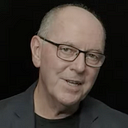Why I Left LinkedIn
I Rediscovered a 50-Year-Old Lesson in Weak Ties
It wasn’t an impulsive decision. The thought had been nagging at me all year — quiet, persistent, a dull ache that’s hard to ignore.
Listen to the Deep-Dive Podcast.
I was scrolling through LinkedIn, skimming past a flurry of congratulatory posts, unsolicited pitches, and endless thought-leadership soundbites. I’d just clicked “accept” on yet another connection request from someone I didn’t know when the realisation struck me: What am I doing here?
The truth was, I didn’t know anymore. LinkedIn had become a habitual distraction, a digital reflex I rarely questioned. Like many others, I had bought into its promise: Build your network. Expand your opportunities. Stay connected.
But at what cost?
That’s when I remembered Mark Granovetter’s 1973 book, The Strength of Weak Ties.
The Lesson I Almost Forgot
I’d read Granovetter’s groundbreaking work years ago, but the memory surfaced now, summoned by my growing frustration. Granovetter’s insight was simple yet profound: casual, fleeting connections — what he called “weak ties” — are valuable because they connect us to new information and opportunities. Weak ties are bridges to different social worlds, ones that don’t overlap with our own.
Granovetter’s work had been revolutionary in the 1970s, and rereading it recently, I saw how deeply his insights had been misunderstood. Weak ties weren’t something to optimise. They weren’t numbers to collect or algorithms to gamify. They were human, organic, and anchored in authenticity.
And that’s when I saw LinkedIn for what it was: the commodification of weak ties.
LinkedIn had transformed a natural social phenomenon into a performance of networking, where the goal wasn’t meaningful connection but accumulation.
Fundamental interactions were drowned out by self-promotion and sales pitches, and weak ties — those valuable bridges Granovetter described — were reduced to meaningless numbers on a screen. This realisation left me feeling disillusioned and frustrated.
The Moment of Clarity
That evening, I left my home office and picked up The Strength of Weak Ties. Revisiting Granovetter’s arguments clarified the disconnect between his observations and LinkedIn’s reality.
Granovetter wasn’t advocating maximising weak ties; he described their natural formation. Weak ties emerge from chance encounters and shared experiences — a coffee chat, a hallway conversation, or collaboration on a project. Their value lies in their authenticity.
LinkedIn, however, had turned weak ties into a numbers game.
Thousands of connections. Millions of interactions. All are reduced to metrics. And yet, how many of these connections mattered? How many provided value? How many even remembered me?
I realised LinkedIn wasn’t helping me build bridges. It was trapping me in a vast, noisy marketplace where everyone was shouting, but no one was truly listening.
The Decision to Leave
A week later, I made the call. I updated my headline: “On a LinkedIn Sabatical | Consulting: Experiential Learning, Workforce Development, Ethics and AI | Explore My Ideas: Google — Medium Greg Twemlow”.
I simply logged out of LinkedIn, archived my account, and walked away.
It felt liberating — like clearing a cluttered desk or stepping out of a crowded room into fresh air. The relief was palpable as I realised the weight of digital noise that had been lifted off my shoulders.
But leaving wasn’t just about quitting LinkedIn. It was about gaining something far more valuable: focus. With the digital noise of LinkedIn gone, I could direct my energy towards what truly mattered to me.
Since leaving, I’ve redirected my energy to platforms and projects that feel meaningful. Medium has become my home for thoughtful, reflective conversations. Over time, I’ve published 310 stories that explore life’s complexities, offer practical solutions, and challenge how we think about contemporary issues.
Unlike LinkedIn, Medium doesn’t promise endless connections. It offers clarity, thoughtfulness, and genuine engagement with people who care about ideas.
Looking Back with Satisfaction
Leaving LinkedIn is not a rash decision but an inevitable conclusion. Granovetter’s work helped me see the fallacy of LinkedIn’s pitch. Weak ties matter, but only when they’re real. And LinkedIn’s version of weak ties? They’re not bridges. They’re digital postcards from people I’ll never meet again.
Ironically, leaving LinkedIn deepened my understanding of Granovetter’s propositions. Social capital isn’t about quantity. It’s about quality. It’s about being someone worth knowing, not knowing everyone.
A Question for You
If this resonates, then reflect on your relationship with LinkedIn. Consider the time and energy you invest in maintaining a presence there. Are you getting the desired return on your investment? If not, it’s time to reevaluate your approach and consider alternative platforms that align more with your professional goals and values.
Leaving LinkedIn has been one of my best decisions, similar to my decision to leave Facebook in 2017. It’s given me time, focus, and the freedom to connect on my terms.
If you’re curious about what I’ve been working on, you can find me on Medium: https://gregtwemlow.medium.com/. There, I’m exploring ideas that matter — free from the noise, the clutter, and the endless notifications.
Leaving LinkedIn, I crossed a metaphorical bridge from a noisy marketplace to a serene and quiet vista.
About the author: Greg Twemlow, Founder of XperientialAI©. Read more of my 300+ articles at: https://gregtwemlow.medium.com/
Greg Twemlow: Sharing what I’ve learned from my career of 35 years as a citizen of the world, parent, corporate executive, entrepreneur, and CEO of XperientialAI, focused on experiential learning for maximum impact with AI. Contact Greg: greg@xperiential.ai
